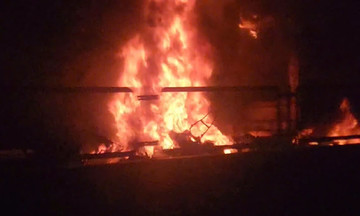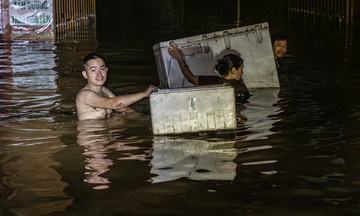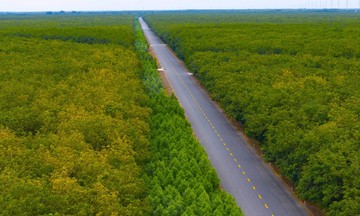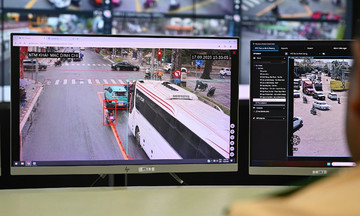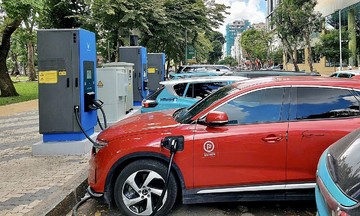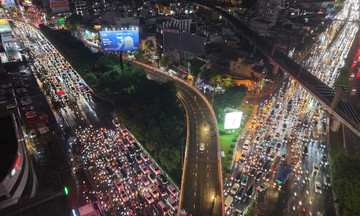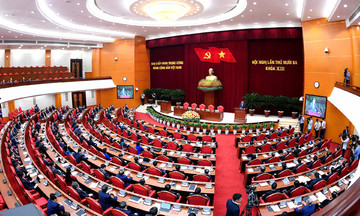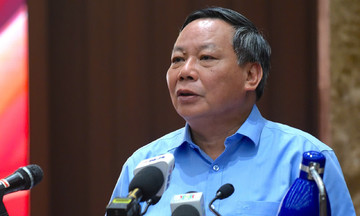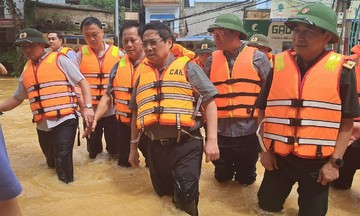On the evening of 24/8, prime minister Pham Minh Chinh chaired a meeting on typhoon Kajiki preparedness at the government's forward command post, located at Military Region 4 Headquarters in Nghe An province. The meeting connected with localities predicted to be in the storm's path.
In his address, the prime minister emphasized the "prevention over response" approach and demanded the highest level of preparation, especially in protecting lives. Recalling the severe damage caused by natural disasters in 2024 and early 2025, he affirmed the guiding principle for typhoon Kajiki response: "prioritizing the safety and well-being of the people above all else."
 |
Prime minister Pham Minh Chinh giving directions on the evening of 24/8. Photo: Duc Hung |
Given the storm's complex developments, the prime minister urged ministries and localities to take immediate action, thoroughly review and activate response plans, and implement the "four on-site" principle (on-site forces, equipment, materials, and logistics). He also stressed preparing evacuation plans to ensure absolute safety. The meteorological and hydrological agencies must continuously update and provide hourly forecasts.
"Typhoon Kajiki is moving quickly and has a wide circulation. All levels and sectors must be proactive, decisive, and persistent in mitigating damage, and promptly address the aftermath," the prime minister said.
Acting minister of Agriculture and Rural Development Tran Duc Thang reported that typhoon Kajiki, with its wide circulation and rapid movement, is gaining strength from the southwest monsoon and 30-degree Celsius sea surface temperatures.
"The typhoon threatens not only coastal areas and plains but also mountainous regions. At sea, there will be strong winds, high waves, and rising water levels; inland, there will be gusts, heavy rain, widespread flooding, flash floods, and landslides," Mr. Thang said.
 |
Acting minister of Agriculture and Rural Development Tran Duc Thang reporting at the meeting on the evening of 24/8. Photo: Duc Hung |
Typhoon Kajiki is considered as dangerous as typhoon Yagi in 2024 in terms of wind strength and at least as strong as, if not stronger than, typhoon Doksuri in 2017, which caused significant damage in Ha Tinh. Meteorological agencies have classified the typhoon as a level 4 disaster risk – a very high level.
According to the Border Guard Command, as of 4 PM on 24/8, border guards had informed, counted, and guided 59,617 vessels with 248,840 workers about the typhoon's development and path to proactively seek shelter. Currently, eight provinces and cities have imposed sea bans: Ninh Binh, Thanh Hoa, Nghe An, Ha Tinh, Quang Tri, Hue city, Da Nang, and Quang Ngai.
Provinces from Thanh Hoa to Hue city are reviewing and developing evacuation plans for people in dangerous areas. An estimated 90,285 households with 325,570 people are expected to be evacuated, including 62,600 in Thanh Hoa, 38,630 in Nghe An, 16,930 in Ha Tinh, 155,210 in Quang Tri, and 52,180 in Hue city.
Nghe An province party secretary Nguyen Duc Trung stated that the provincial government "will not allow people to remain on boats or rafts when the typhoon directly impacts," and will enforce evacuations if necessary to ensure safety.
"People are advised not to collect firewood or fish during floods and to avoid complacency before and after the storm. Currently, working groups led by provincial leaders are inspecting 130 communes and wards; in mountainous areas, locations near rivers and streams, and areas at risk of flash floods and landslides are under special monitoring," Mr. Trung said.
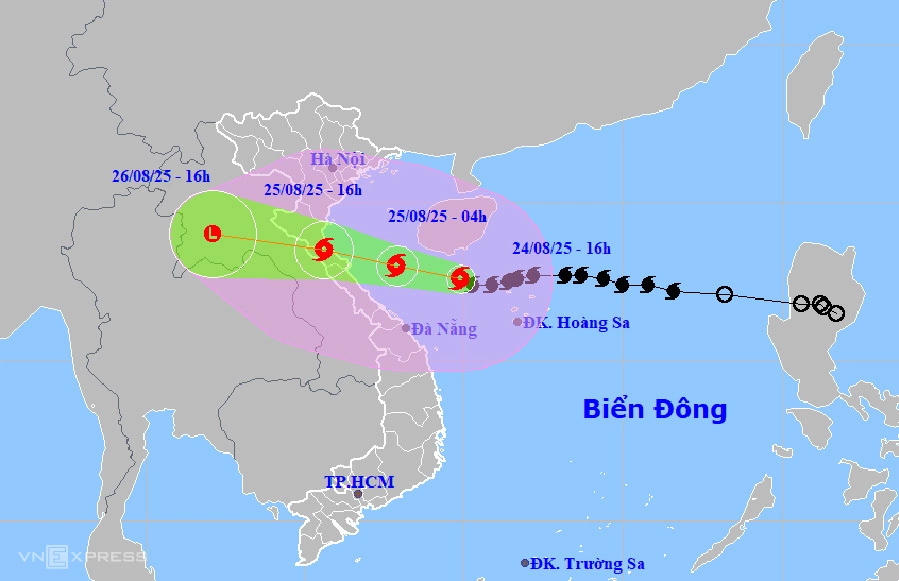 |
Forecast path and affected area of the typhoon at 4 PM on 24/8. Photo: NCHMF |
Ha Tinh province party secretary Nguyen Duy Lam reported that since yesterday, working groups from the provincial party committee, the provincial People's Committee, and leaders of departments and sectors have inspected and directed work at vulnerable locations. The province has allocated 6.9 billion VND to support 69 communes and wards in typhoon Kajiki prevention and has established a forward command post in Nghi Xuan commune to carry out tasks. Nearly 13,000 military personnel, police officers, militia, and youth union members have been mobilized to support evacuation, crop harvesting, and house reinforcement.
According to Mr. Lam, large reservoirs such as Ke Go, Song Rac, and Ngan Truoi have only reached 30-50% of their design capacity, while many medium and small reservoirs are at 50-85%. Since yesterday, four large reservoirs, including Song Rac, Boc Nguyen, Thuong Song Tri, and Kim Son, have proactively discharged water for regulation. The government has tightened vessel management, focused on repairing the eroding Hoi Thong dike (Xuan Hai commune), and arranged forces and equipment 24/7 for response, rescue, and post-typhoon recovery.
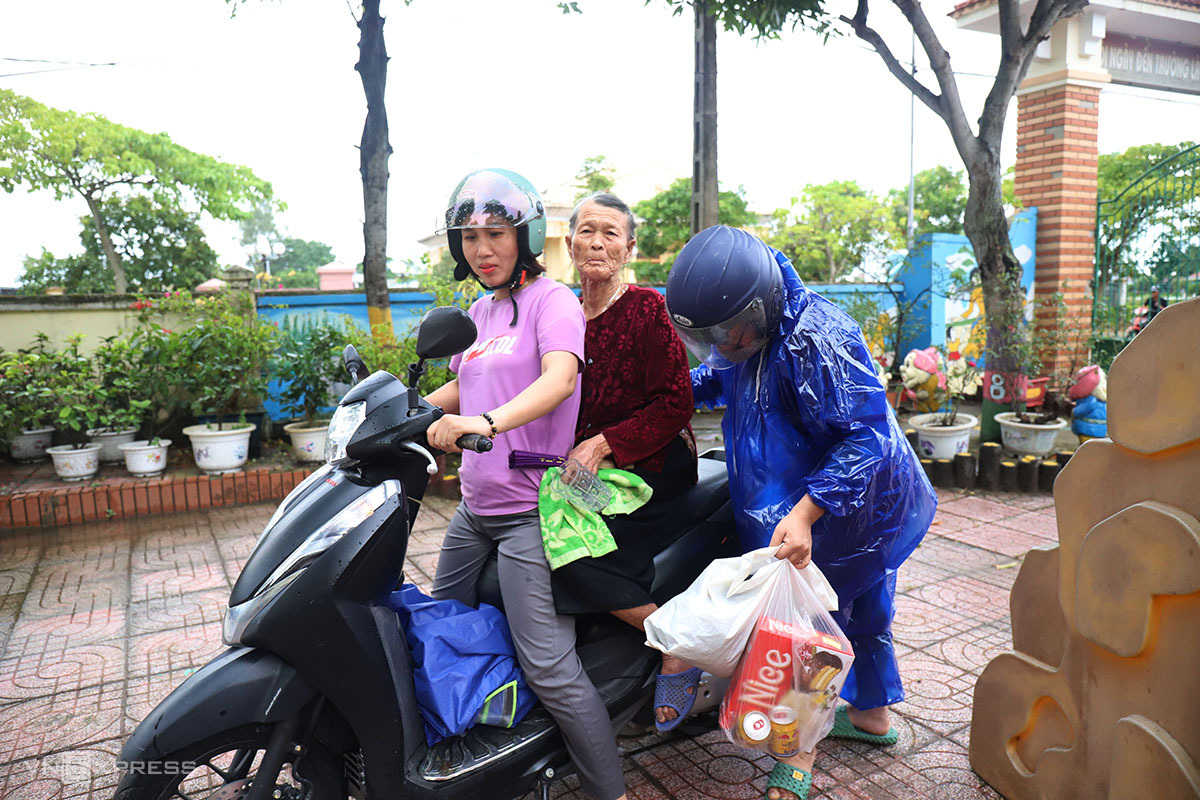 |
An elderly woman being transported to Dan Hai commune kindergarten, Ha Tinh province, to shelter from the storm, afternoon of 24/8. Photo: Duc Hung |
Following the meeting, prime minister Pham Minh Chinh inspected and directed typhoon Kajiki response efforts in Nghe An.
Duc Hung



